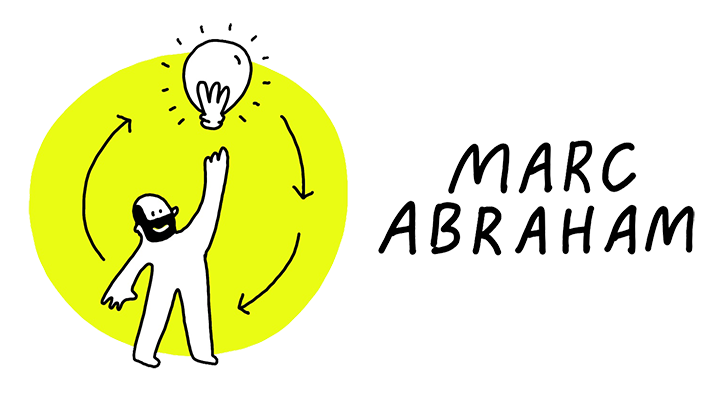A couple of weeks ago I wrote about the Systems Thinking discipline. My main learning point about Systems Thinking was the interconnectedness of the parts that make up a system. Understanding the different parts and how they interact with each other is critical in developing a full understanding of the problem or opportunity to tackle.
In this post, I’ll cover a number of practical tools and techniques that help us map and understand systems. There are plenty of valuable tools and techniques out there, and I’ll focus on two tools that I believe offer great ways to get started with Systems Thinking: (1) the Iceberg Model and (2) Feedback Loops. Rather than reacting to what’s in front of us, both tools help us be more proactive and inclusive in our thinking.
Iceberg Model
In my last post I already alluded to the Iceberg Model of system thinking, as a useful framework for understanding what is causing a certain event or opportunity. The Iceberg Model visualises both what’s visible and what’s hidden, as explained in this great post by Ivaylo Durmonski. There are four levels to the Iceberg Model that we can diagnose and address:
- Event – What’s happening right now?
- Pattern – Observing trends or repetitions that lead to a specific event.
- Structure – What is causing the pattern to exist? At this level, we aim to understand the different things that influence a pattern and identify any connections between different patterns. The different things causing the behaviour can be physical, environmental or habitual in nature.
- Mental model – A mental model is a representation of how we understand the world. It comprises the values, beliefs and assumptions that we use to simplify complexity and understand how things work.

Let’s look at a sample situation where we can apply the Iceberg Model and use its different levels to both understand the underlying problem and come up with an appropriate solution:
- Event – Frequent misunderstandings about product priorities between product managers and senior stakeholders in the organisation.
- Pattern – A number of difficult conversations in the past few months where discrepancies in expectations had to be realigned.
- Structure – Product managers will work through and agree high level priorities with their stakeholders at the start of each quarter. Product managers will then discuss the scope of each priority with the relevant designers and engineers, and execute accordingly.
- Mental model – The product managers pride themselves upon putting the customer first. They believe that their focus should be on delivering what customers want or need, and interests of ‘the business’ (and its stakeholders) will be served as a result.
In this fictitious example of the Iceberg Model, once you’ve analysed both the visible and hidden aspects of the situation, you can look at how and where to best make changes. For example, you could come up with an approach to evolve the mental model of the product managers, to help them zoom in on more on stakeholder interests earlier in the process. Or you could change the structure, by introducing changes to the decision-making process and the way in which priorities are communicated.
Feedback loops
In simple terms, a Feedback Loop connects an action with a subsequent reaction or consequence. Because of the interconnected nature of a system, it means that if there’s no feedback, there’s no system.

There are two main types of feedback loop for us to consider, the Balancing Feedback Loop and the Reinforcing Feedback Loop.
A Balancing Feedback Loop aims to stabilise a system, resisting further changes in one direction. The loop will start moving in the opposite direction, to restore balance within the system. Balancing Feedback Loops consist of three distinct components:
- The goal or desired level
- The actual level
- The gap between actual and desired
A good, practical example is the thermostat. It will monitor room temperature (the actual level) and when it goes below or above a certain temperature (the desired level), the thermostat will begin to heat or cool the room to keep the temperature within the desired level.

A Reinforcing Feedback Loop will lead to exponential growth or decline. This loop is self-reinforcing, which means that it amplifies in one direction. Think about exponential growth, for example, whereby a company gets investment to grow its revenue. As revenue increases, the company becomes more attractive as an investment opportunity, raises more money to invest into the business and continues to grow its revenue as a result.

Main learning point: Both the Iceberg Model and Feedback Loops offer a way to look beyond what’s in front of us. The Iceberg Model helps in understanding what’s underneath specific events or observations. Feedback Loops – be it balancing or reinforcing – enable us to better grasp the interactions between parts of a system.
Related links for further learning:
- https://thesystemsthinker.com/causal-loop-construction-the-basics/
- https://jarango.com/2021/05/07/the-key-to-understanding-why-things-happen/
- https://thesystemsthinker.com/management-flight-simulators-flight-training-for-managers-part-i/
- https://medium.com/disruptive-design/tools-for-systems-thinkers-the-6-fundamental-concepts-of-systems-thinking-379cdac3dc6a
- https://durmonski.com/self-improvement/iceberg-model-systems-thinking/
- https://untools.co/iceberg-model
- https://fs.blog/mental-models/
- https://fs.blog/tgmm/
- https://medium.com/@myroslavazel/feedback-loops-in-system-thinking-7ef06e2ff310
- https://medium.com/@hanu/thinking-in-systems-book-notes-c42b70843928
- https://untools.co/balancing-feedback-loop
- https://thesystemsthinker.com/anatomy-of-a-reinforcing-loop/

One response to “My Product Management Toolkit (49): Systems Thinking tools & techniques”
[…] explains about ‘stabilising loops’ and ‘reinforcing loops’. These are feedback loops that connect a number of connections from a stock, through a set of decisions, rules or actions […]